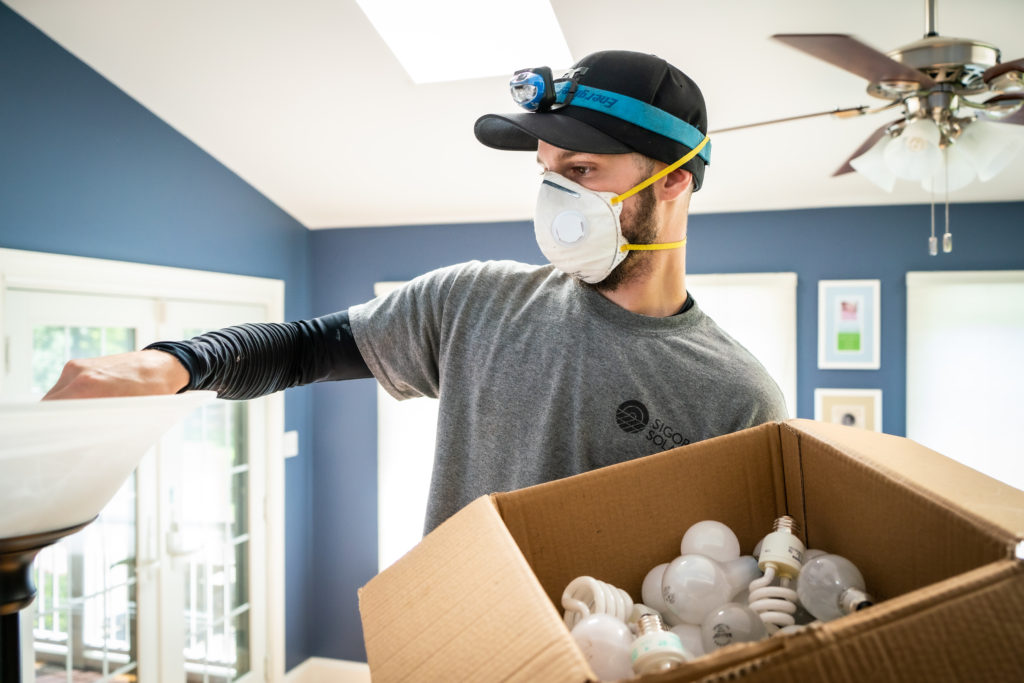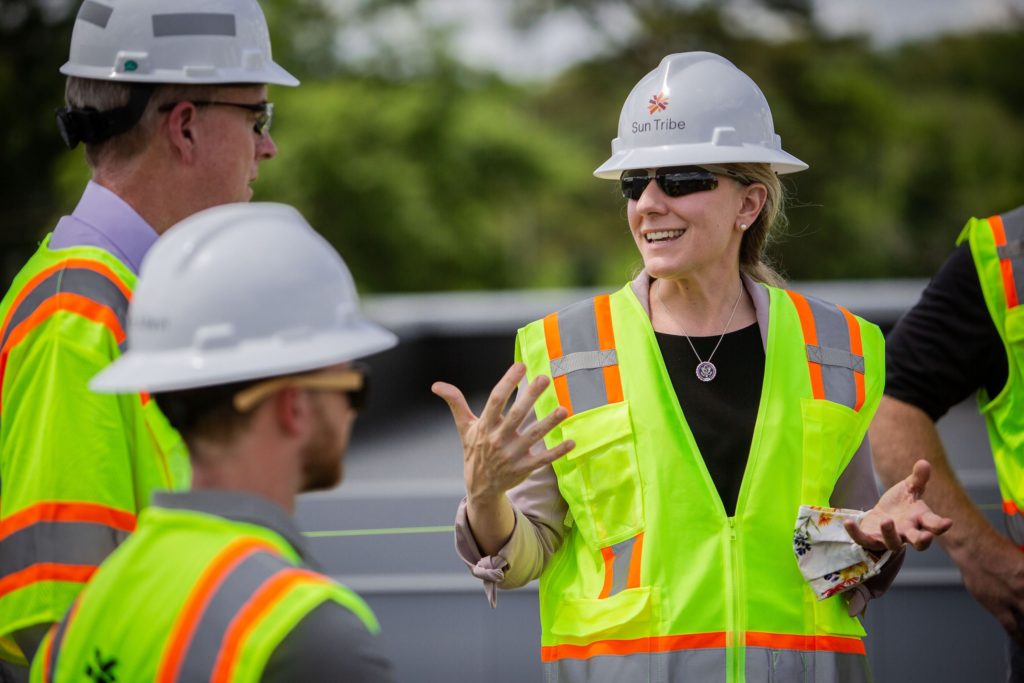Virginia Clean Economy Act: 4 Things To Know
The Virginia Clean Economy Act (VCEA)
One year ago, the Virginia Clean Economy Act (VCEA) officially became law. Since then, the VCEA has established the Commonwealth as a national leader in the fight against climate change as the first state in the South to set a 100% clean energy standard and commit to a zero-carbon electricity grid.
This policy became reality thanks to the tremendous effort of dozens of conservation and clean energy advocates across the Commonwealth and especially thanks to the patrons themselves, Senator Jennifer McClellan and Delegate Rip Sullivan.
Climate change is no longer a problem we’re trying to solve for our grandchildren – it is the reality of today. From the unprecedented heat wave occurring in the Pacific Northwest, to the flooding in Detroit last week, and to the ever-increasing risk of sea level rise in Virginia – the urgency of the climate crisis has never been more clear.
A warming climate exacerbates health threats like infectious diseases and respiratory illnesses due to carbon pollution, and Virginia is not immune from these health risks. Richmond has been labeled as the Asthma Capital of America several times within the last five years by the Asthma and Allergy Foundation of America – climate change is a public health emergency, and front-line communities need our help now.
“One year ago, the VCEA made Virginia a leader in combating the climate crisis and we’ve shown that we’re not done yet. Together with Virginia’s lawmakers, Virginia’s conservation community is looking forward to continuing to build on the VCEA towards an equitable transition to a carbon free economy.” – Mary Rafferty, VCN Executive Director
Virginia is already seeing job growth in the clean energy industry thanks to the VCEA. According to a recent report, the state’s clean-energy jobs growth was 6.5% from June to December 2020 despite the COVID-19 pandemic.The growth of clean energy gives us cleaner air while tackling the Commonwealth’s contribution to climate change.
Learn more about the Virginia Clean Economy Act
The Virginia Clean Economy Act takes the following four steps to get us to 100% carbon-free electricity:
1) Cap on Carbon Pollution through RGGI
To fully decarbonize Virginia’s electricity grid by 2045, there needs to be a cap on carbon pollution.
In addition to the passage of the VCEA, Virginia joined the Regional Greenhouse Gas Initiative (RGGI), which established a cap-and-trade program to reduce greenhouse gas emissions by capping carbon dioxide allowances for polluters. Virginia is the first Southern state to join RGGI, which currently includes 10 other states throughout the Mid-Atlantic and Northeast.
In Virginia’s first year of participation in RGGI, the Commonwealth received $228 million from RGGI auctions. Virginia dedicates half of RGGI proceeds to energy efficiency programs for low-income citizens and half to flood prevention and resiliency programs with the revenue from the commonwealth’s new carbon market.
2) Establish Energy Efficiency Resource Standards
The VCEA established efficiency standards to reduce overall energy consumption in the state while protecting low-income households. Virginia families currently pay the 10th highest average residential electricity bills in the nation – 14% higher than the national average. Energy efficiency standards benefit Virginian consumers by lowering utility bills, especially for low-income families who pay a disproportionately higher share of their income to cover bills.
Energy efficiency is further prioritized with half of RGGI proceeds being directed to energy efficiency programs for low-income households. Even better: per dollar invested, energy efficiency results in twice as many jobs as fossil fuels, 96% of which are currently small businesses in the commonwealth.
Finally, increased energy efficiency measures curbs carbon pollution as demand for gas decreases and utilities become more efficient. Most importantly, the decrease in utility development and reduction in energy consumption saves ratepayers money.

Sigora Solar employee replaces household light bulbs as part of their energy efficiency work.
3) Incentivize small-scale, rooftop solar
The VCEA incentivizes a broad expansion of distributed electricity generation across the state, including rooftop solar which utilizes otherwise unused space to generate clean energy.
One example illustrating the impact of the VCEA is the growth of rooftop solar across Virginia’s public schools. Virginia-based solar developers Sun Tribe and BrightSuite Solar partnered to install a solar energy rooftop array at Powhatan County Schools.
Powhatan County Public Schools Superintendent, Dr. Eric Jones, perfectly described the trio of environmental, economic, and educational benefits the VCEA is bringing to the state: “This solar power project has provided real cost savings and invaluable hands-on learning opportunities to our teachers and students. More importantly it sends a clear message that we value clean, renewable energy in our community.”

U.S. Representative Abigail Spanberger (Va. 7th Congressional District) tours the rooftop solar array.
4) Develop a 100% clean energy grid
Our four steps to get to 100% carbon-free electricity are ordered purposefully – we should use the mantra “Reduce, Reuse, Recycle” as a metaphor for energy management. First, we must reduce carbon pollution and energy consumption through carbon caps and strong energy efficiency standards. Then, we must increase renewable generation with an emphasis on reusing previously developed lands and rooftops for solar generation. However, to get to 100% clean energy we need to “recycle” our renewable energy sources through the development of large-scale solar and offshore wind projects.
The VCEA kickstarted a massive offshore wind industry. Virginia set one of the most ambitious offshore wind targets in the country, securing the Commonwealth’s place as a premier hub for a $100 billion+ offshore wind industry.
As large-scale solar projects develop to meet our 100% carbon-free electricity goals, we will continue to advocate for best practices in land development. Best practices will include the implementation of Pollinator-Friendly design to control stormwater runoff, reduced erosion, and most importantly, attract pollinators and biodiversity. Landowners can also use solar sheep to reduce operation and maintenance costs, reduce gas-powered lawn machinery use, and provide increased agricultural land for local farmers.
